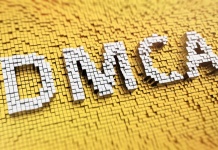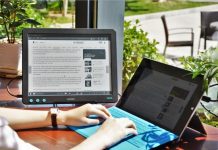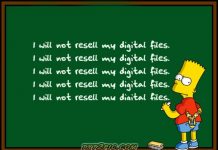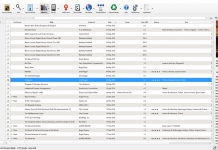So what’s the price? I just might want one—the rugged new Kindle rival from Plastic Logic, that is.
As reported by Wired, "pricing has not been announced" but supposedly the device will be "’priced competitively’ with devices such as the Kindle, which currently costs $359."
Um, is this a tease, as is often the case with new products, such as the Eee PC? Might the price actually be in the $500 range when the Plastic Logic gizmo ships early next year? I hope not. But some clues are there. The market is said to be "professionals" who "read much more business content than recreational content. They require access to all formats of digital content at their fingertips, and want a large readable screen" So says Richard Archuleta, CEO of Plastic Logic.
In Archuleta’s place, I’d go after the mass market—recreational readers and cash-strapped students, not just professionals. Here’s a one-pound machine with E Ink-level display quality that you reportedly can drop on the floor. Recreational readers will welcome a rugged large-screened reader able to display two-pages at a time and augment the cellphones, PDAs and iPhones they use outside the home—one argument for trying to minimize eBabel problems. Students will of course love the ability of the Plastic Logic reader to show textbooks in detail. The display area is said to be 10.7 inches diagonal, while the actual dimensions of the device are copy-paper-sized, 8.5 x 11. Supposedly a color version could appear in the next three-five years. Here are other details, from Kindle Killer stalks eBook market, in PC Pro:
A touchscreen swipe moves pages and allows you to mark up documents, underline paragraphs, ring important words or just add thick fingered comment. There’s also a touchscreen keyboard reminiscent of that on the iPhone, allowing you to type in docs and add notes.
In the demo the Plastic Logic chief exec spins us through an eBook page, a magazine cover, a piece of sheet music and a couple of Power Point slides, all beautifully rendered and far more impressive for the additional screen real estate available.
The range of support really is startling, with Office docs, Powerpoint slides, PDFs, text files and other eBook formats all accomodated and transferable over…Bluetooth, Micro-USB, seance, prayer and general wafting near the device. All of this lovliness comes courtesy of its flexible plastic technology, which allows the sheets to bend and flex, hopefully making them far more robust than current readers…
All kinds of questions abound, beyond immediate ones such as the e-book formats the machine will be able to read (DRMed PDF, Adobe-DRMed ePub, just what?) and whether the production model will do WiFi.
Will Amazon buy up Plastic Logic or use its technology? Could the "Kindle killer" end up being just another member of The Family, since Amazon and Plastic Logic have been in talks in the past? And where does this leave e-book buyers, borrowers and content-providers? If the Plastic Logic machine eventually can match the Kindle’s wireless capabilities, and if independent bookstores can team up to offer a large selection, might Amazon suddenly be vulnerable—especially if the Plastic Logic machine can work with ePub and avoid the Kindle’s value-subtracting focus on a DRMish approach? And what are the possibilities for the library world? With a more rugged design, the Plastic Logic machine could be far, far superior to the current Kindle.
Don’t count Amazon out however, even if it doesn’t turn to Plastic Logic. Rugged large flexible screens are very much in the plans of E Ink, a partner of which is Amazon’s current display supplier. In fact, Plastic Logic itself uses E Ink tech.
Related: Plastic Logic news release, Google and Techmeme roundups, Finding Dulcinea, Cnet and earlier mentions of Plastic Logic in the TeleBlog.


































nice! it looks like something apple would make, lol. i want one. (depending on the price, of course!)
Mass-market, recreational readers? Nah, these are already well served by Kindle, Sony, and smartphones. Besides, these are the old-timers who want to ‘curl up with a book,’ and ‘could never do that with a computer screen.’
The smart play for Plogic is to hook up with NY Times, Washington Post, and other newspapers, get subsidized and bundled into a subscription basis. The key, however, would be wireless connectivity — that gives you ‘push’ updates of the newspaper at all hours — but that also means:
– building in some sort of wireless
– dealing, probably, with some telco
– beefing up battery power to support the wireless chips
At the very least, we are now seeing a blossoming of the ebook reading devices market, and Plogic’s entry is keeping ebooks in the ‘hot news’ item column for a few more months.
All good, bring on Kindle 2.0 and all others!
Have you seen the swype product announcement. It supposedly gets you 40+ words per minute using an on-screen keyboard. Add that to this and you have a laptop replacement.
FYI, Swype works by using a dictionary of 65k words and it tracks your movements across the keyboard. Say you want to spell out David: You plop your finger down on the D drag across to the A down to the V up to the I and to the D. Wiggle your finger up and down on a letter for a capital and wiggle it side to side for a double letter. Supposedly the gestures can be fairly broad — you don’t need to hit each key dead center.
This has even slower page flips than e-ink. Seriously, what on earth could it be doing in the ~2000ms before it starts redrawing the screen? I’ve thought about this a lot, and I simply can’t think of anything that couldn’t easily be fixed with either some precalcing or capacitors.
I find 2000-3000 ms page flip times utterly unacceptable. I was almost annoyed with my QReader’s 200 ms page flip time, but then I adjusted the font and disabled antialiasing and now it flips the page in 70 ms. (70 ms is quite acceptable, as is anything less than 100 ms, which is the standard causality delay threshold. (Or at least 100 ms was the standard before people’s brains started to adapt to those huge delays in webbrowsers.))
I hope that Amazon don’t buy Plastic Logic — it’s better for the rest of us if there is some strong competition in this area, on a mass scale.
It’s a little perplexing that they haven’t thought of a name for the device yet. It kind of makes me think that they are looking to be acquired…
So, i’m not really sure about this, but I had the impression from times past that plastic logic was in the OEM business. I see this more along the lines of the reference models that Intel releases on new hardware.
Specifically, the Astak line is supposed to use the FlexiScreen (and I believe its from Plastic Logic) in its 9.7 inch model. Not because they need flexibility, but because the standard screens are too brittle at that size. Additionally, to Marcus’ comment Astak is planning to use a new controller from Epson to get the speed much higher.
At this point in time I believe that Astak has the best spec’ed solution, and if you are going to see something like the Plastic Logic device I believe it will come from Astak.
On the other hand, I fear Astak is chasing the holy grail. Original plans were for a late summer release at under $149. As they work with user reviews panels they have come up with a significantly improved device. They wanted accessories available at launch, and based on user feedback they developed a plan for a (clip on?) light attachment. They have covers planned. They added in support for the Epson controller to get the speed up there. They added in the FlexiScreen on the larger unit. I do want all this stuff, but I fear that the quest for perfection will lead to ongoing delays as just one more neat feature rears its head (swype would be great!). I’m sure between now and launch we will find something else we could wait for
So the August launch has slipped, and the base price has risen from under $150 to under $250. The current best guess on availability is October. There have been no official statements out of Astak, but they did mention that the new Epson controllers would not be available until October or later. Assuming they are waiting on these for even the first unit, we are looking at a November launch. The 9.7 inch unit would depend on 1st half ’09 availability of the FlexiScreen. It also is awaiting the inclusion of some kind of pen/annotation capability and its revised price is unknown.
>Mass-market, recreational readers? Nah, these are already well served by Kindle, Sony, and smartphones.
The mass market for E-readers is “already well served”? Suuure it is. It isn’t well served until I can take my E-reader into a Borders/B+N, and with a few taps on the screen, download and pay for the magazines I want wirelessly from an access point in the store. No to required subscriptions, proprietary “push” networks, cellular bundling, monthly fees. Yes to single-copy book and periodical sales with no lock-in. For newspapers, just pass the newsbox on your way to work and update your device in an instant with an ultrawideband (wireless USB) link. For that matter, two-way interaction with the wireless access point isn’t really required; the paper can be continously transmitted in a rolling update and the reader just receives it. Radio amateurs have been working on this technology for years; it’s called Multicast.
According to Wired, the Plastic Logic screen measures 10.7″. It definitely is different from the 9.7″ screens which are made by Prime View International. PVI is adding “FlexiScreen”, which appears to simply be replacing glass with plastic, before releasing its 9.7″ screens. The odds are that no device with a PVI 9.7″ screen will be available in quantity until next Spring, and Plastic Logic’s device is H1 (probably Q2) next year.